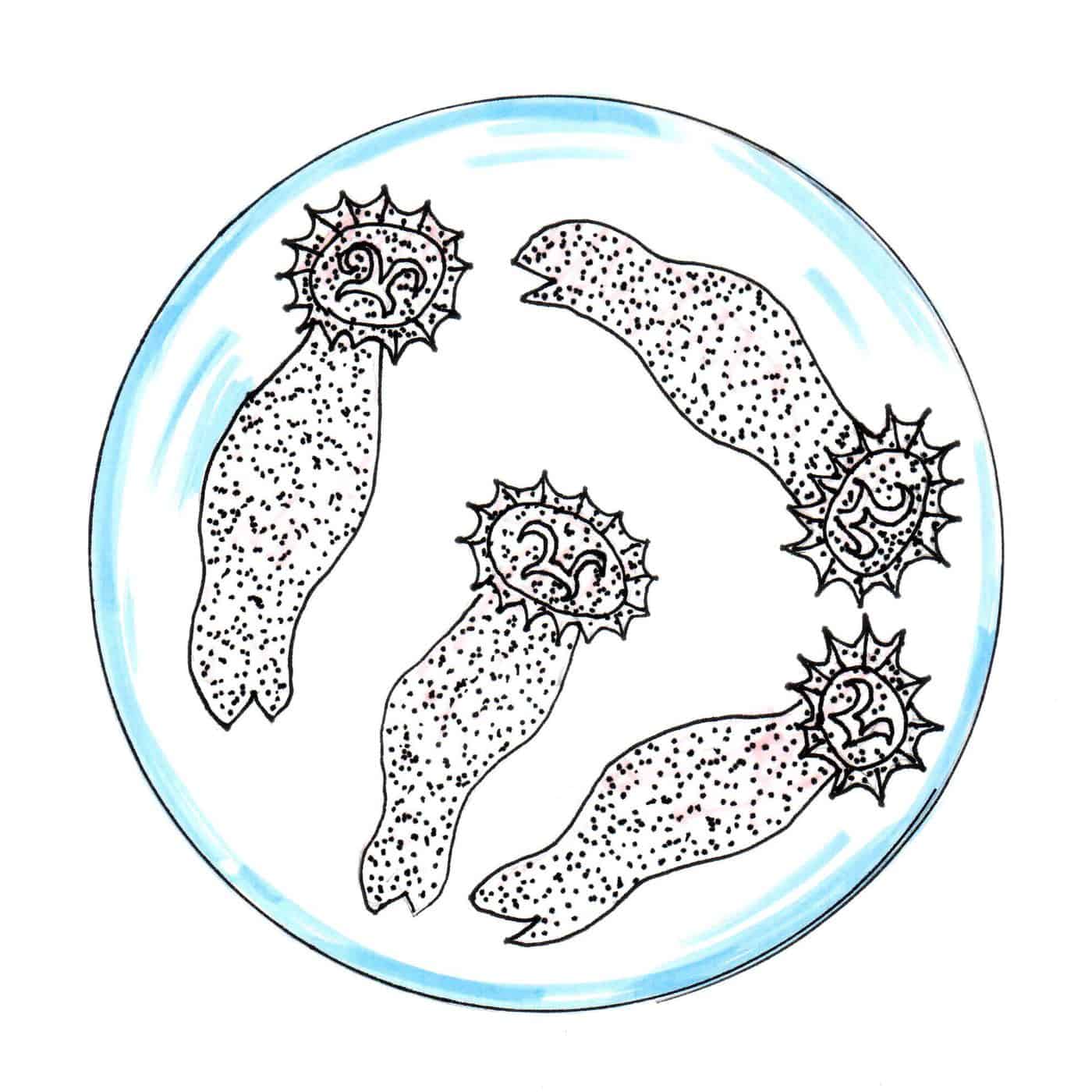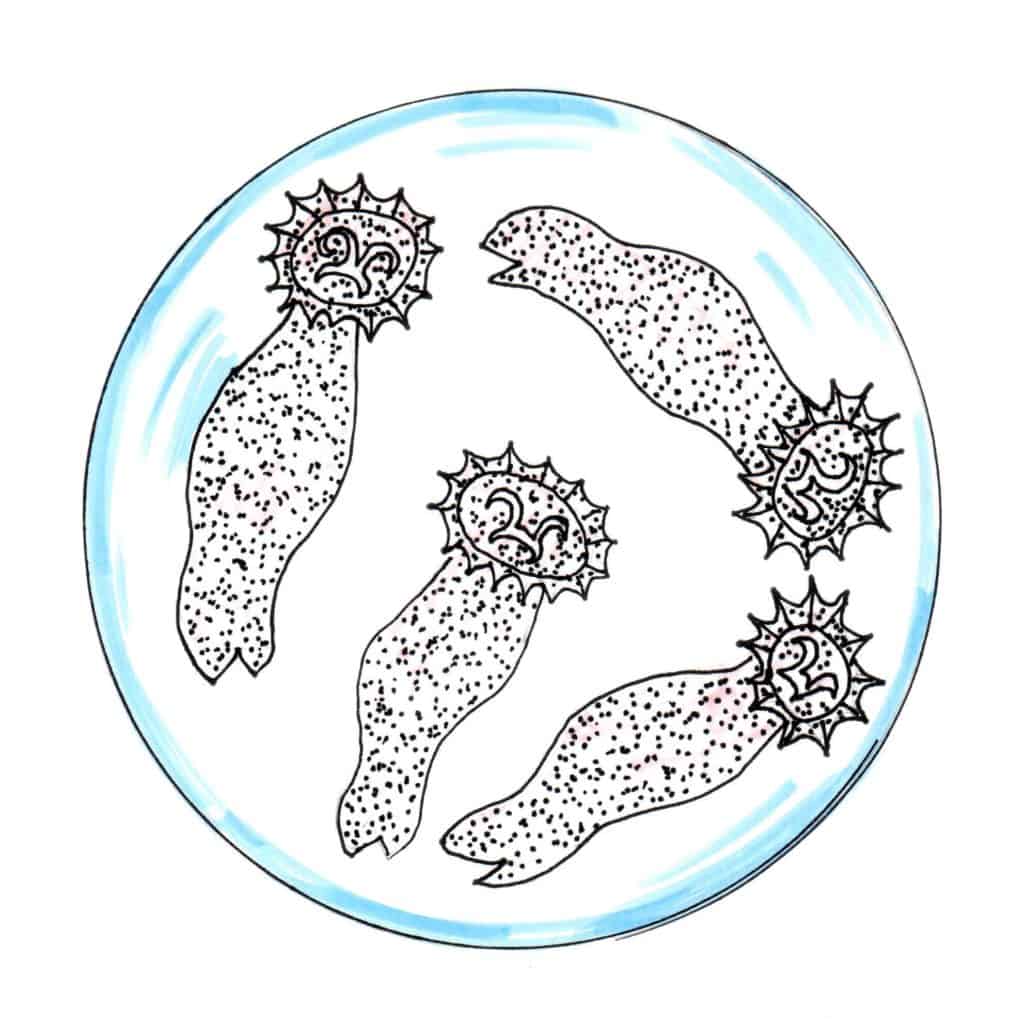Given the common name of fish flukes by hobbyists, monogenean trematodes are one of the most common parasites we come across in freshwater fish. There are many species that can infect freshwater and marine species, but we most commonly deal with the Gyrodactylus spp. and Dactylogyrus spp. Mainly feeding on the external layers of skin and gill tissues, these little parasites can make fish very itchy, and cause death in high enough concentrations.

It is commonly thought that the live-bearing gyrodactylids mainly feed on skin whereas the egg-laying dactylogyrids mainly feed on the gills, but this is not always true. In severe infestations, fish flukes may cross over or both be present in the same sample. This is why every competent aquatic veterinarian takes skin and gill samples during our fish physical exams. Think of them with water quality as the temperature, heart rate and respiratory rate equivalent in small animals.
Since they are microscopic, you may only note their presence from your fishes’ behavior. Given that they cannot scratch themselves like humans or your dog, fish itch themselves through a behavior known as “flashing.” Using the sides or bottom of your pond, any plants or decorative items, they will rub up against these to itch their skin. You may note bruising or missing scales on the fish or the bottom of your pond from intense bouts of flashing.
Now, just because your fish is flashing, does not immediately mean they have fish flukes! There are many different parasites, including trichodina, white spot, costia, and others that will produce the same behavior. Depending on which parasite is responsible will dictate the best type of treatment and duration. Do NOT just dump in a bunch of “fish treatments” and definitely NO ANTIBIOTICS. Antibiotics do NOT treat parasites. Yes, they may help with any secondary infections caused by the parasite damaging the skin, but they will not touch the parasite.
How do I treat fish flukes?
Your veterinarian will diagnose the presence of any parasites by their skin and/or gill samples. Once a diagnosis has been made, appropriate treatment with anti-parasitic medication can take place.
If you suspect your fish have flukes or any other external parasite, please contact your local aquatic veterinarian or call our office at (831) 278-1081.


I have read that flukes are as common as all other parasites (combined) on koi. Is this true
There have been no studies to confirm this. We do not see it more frequently than other parasites.
Thanks. I have another question. I have tried to find out at what stage lernaea well create a lump or bump on a koi fish. The only thing I have found is it is mobile in all stages until the female attaches to the host. I have seen many people post that the lump on a kois tail or body could be lernaea. But from what I have been able to find. The pump is only at the adult stage? If so than does the female grow larger when attached or is she an adult and then attaches to the host? Is she so small when she attaches that you cannot see her and then she grows? Thanks
The visible part of anchor worms (Lernaea spp) is the female reproductive organ. You usually cannot detect the males or immature females. Sometimes, juveniles can be seen in microscopic mucus samples.
hi I have an pet large mouth bass and is still a baby about 4 inches. I seen a white ball in the lens thinking its a fluke. Is their any possible way to treat it fast or anyway.
If you are concerned about your fish, please call (831) 278-1081 for veterinary assistance. If you are outside California and Nevada, please visit https://fishvets.org or https://wavma.org
Pingback: Gill Flukes In Fish - Betta Care Fish Guide